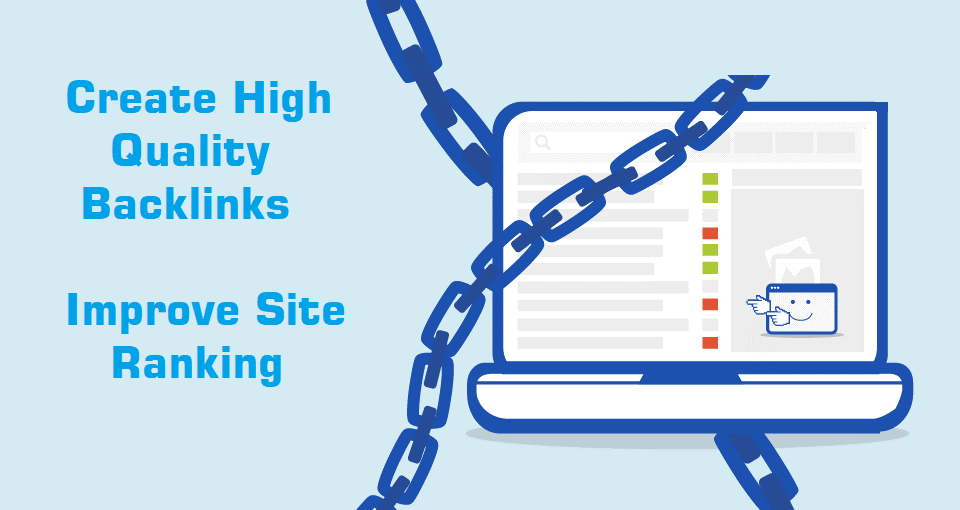Backlinks are used to distribute website authority around. High-quality backlinks essentially signal that the origin website recommends the destination website. They hint that the destination website is authoritative and high-quality on the subject, deserving more visibility.
That’s because backlinks work like “votes of trust.” The quality of the backlink represents the quality of the vote. Together with the number of backlinks you have, this gives Google good insights into the relevance and authority of the linked page. In other words, many low-quality backlinks can strongly suggest that your website doesn’t deserve to be shown at the top. Additionally, it can sometimes outright signal that you’re engaging in link schemes that aim to game the algorithm.

Backlinks from websites in your niche
When it comes to backlinks, relevance is critical. Because backlinks work like academic citations for your website, it is always best to be acknowledged by the experts in your industry.
For example, imagine that your website is about fishing. In that case, a backlink from an authoritative website about outdoor living or hunting can still be very valuable. This is especially true if the specific content that links to you is on your subject.
Backlinks from authoritative websites
While there’s no truly objective number we can put on a website’s authority, getting a backlink from a high-quality website is still great. For example, even though it might not be on your niche specifically, a backlink from a high-authority media outlet like Entrepreneur.com can still be very beneficial. At the very least, getting featured by such a media is a big accomplishment – so you can expect to be properly rewarded for it.
Backlinks from pages with high quality links
Another important factor to consider is whether the page that links to you has high-quality inbound backlinks itself. As you know, backlinks are one of the top factors for ranking in Google, and their value is transferred around. If your backlink comes from an authoritative web page, you can expect some of that authority to be transferred over to you.
Dofollow backlinks that pass their full value
One important factor to look out for is whether your backlinks are dofollow or nofollow. Nofollow backlinks still carry some value even if some SEOs disagree and avoid them. However, dofollow backlinks are known to pass as much of their authority as possible. Because of that, when analyzing your backlinks, consider noting which links are dofollow and nofollow.
Backlinks placed at the top of the main content
Where your backlinks are located on the page matters as well. In their Quality Rater’s Guidelines, Google explicitly asks raters to mark the different content sections of web pages. They define each section based on the type of content present in it. The three types are Main Content (MC), Supplementary Content (SC), and Advertisements/Monetization (Ads). Naturally, backlinks from the Main Content area provide relevance signals compared to links from the Supplementary Content or Ads.
Additionally, while not proven yet, there’s a possibility that backlinks at the beginning of the content bring slightly more value than those placed at the bottom.
Backlinks with keyword-rich anchor texts
Backlinks with keyword-rich anchor texts are known to give more value to your pages. To prove that, take Google’s original explanation:
“First, anchors often provide more accurate descriptions of web pages than the pages themselves.”
Anchor texts aren’t as important as they used to be simply because nowadays, Google is better at understanding the contents of a page. However, they still play an important role. A high-quality backlink from an authoritative website with a keyword-rich anchor can be a major booster for your page’s rankings.
Anchor texts are also a major influencing factor for spam detection. Google can detect high quality backlinks schemes that try to game the system by analyzing the website’s anchor texts. Because of that, focus on doing natural link building without trying to push the limits. Your anchor texts should be natural, with the majority being branded anchors or naked link anchors.
Especially when looking at landing pages, having too many keyword-rich anchors can be a sign of spam. That’s because website owners that normally create backlinks aren’t usually keen on linking directly to sales pages. This is also partly why blogging for companies is becoming so popular – it allows you to earn backlinks to content others find valuable and pass that value to important pages through internal linking.
Backlinks from in-depth, valuable content
The more valuable a piece of content is, the more authority its backlinks deliver. A good sign that a backlink is great is whether it already gets any traffic from Google. For example, if the article that links to you already ranks at the very top for a competitive keyword, you can be sure the site is seen as authoritative.
Additionally, if that page already gets a good amount of traffic, the odds are that you’re going to get some referral traffic from it due to the spillover effect.
Last but not least, look for backlinks that are linked contextually in the text. The sentences surrounding your backlink also provide context to both users and search engines, meaning that you benefit from it. Contextual backlinks give the user a reason to explore your content. It can also be a good sign for Google as it helps the search engine narrow your topic and establish the exact search intent your post should rank for.
To wrap things up, remember that you can quickly judge the quality of a backlink based on how you feel about it. If you earned a genuine backlink and you’re proud of it, Google will likely give you the benefits. Meanwhile, if you know a particular link isn’t honest and transparent and it only serves your SEO, the odds are that it’s a low-quality backlink.
Please contact us to order high quality backlink packages.
Email: qualitybacklink.net@gmail.com
Skype: qualitybacklink
Facebook Messenger: qualitybacklink.net
WhatsApp: +84904138793






